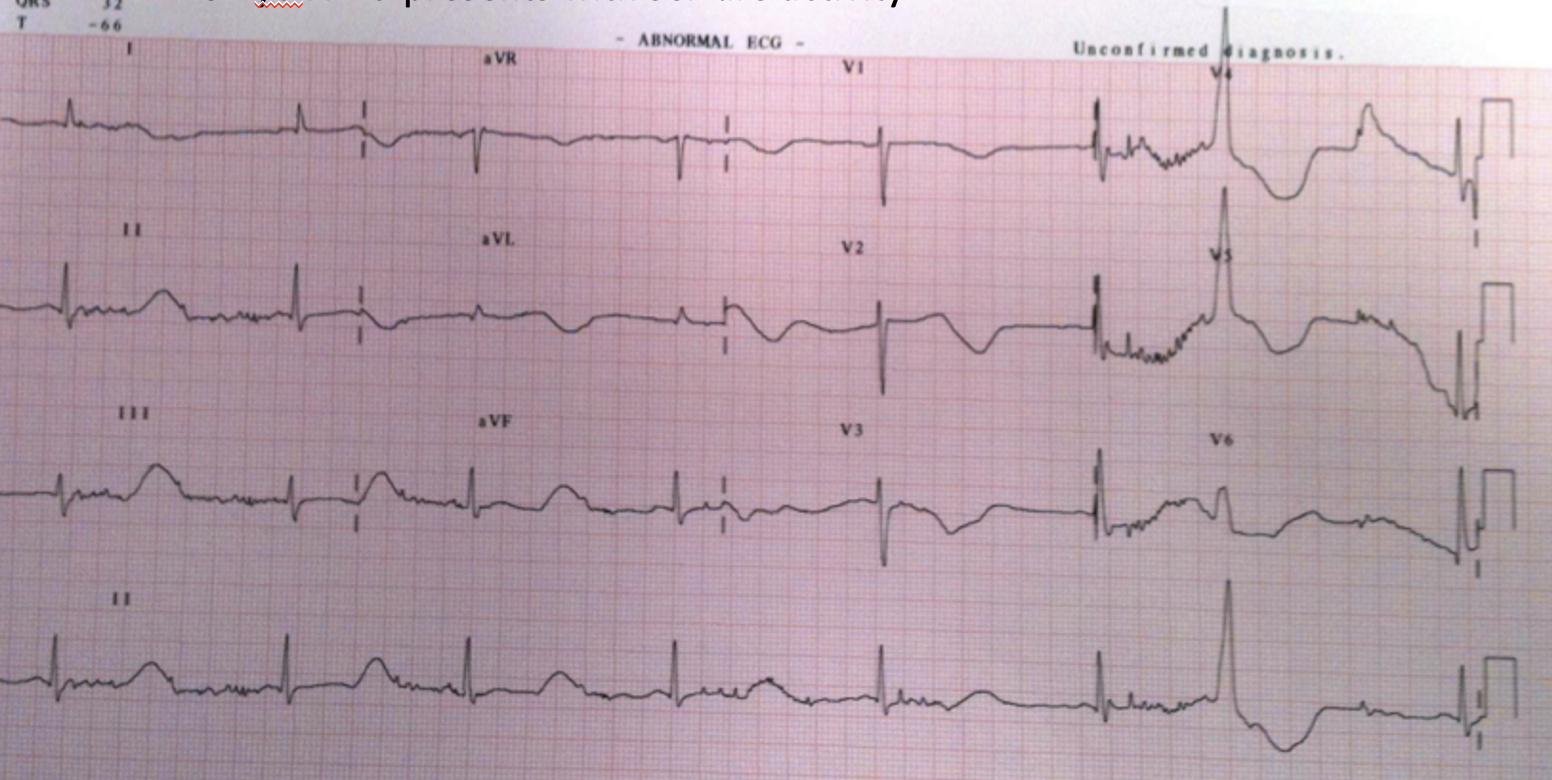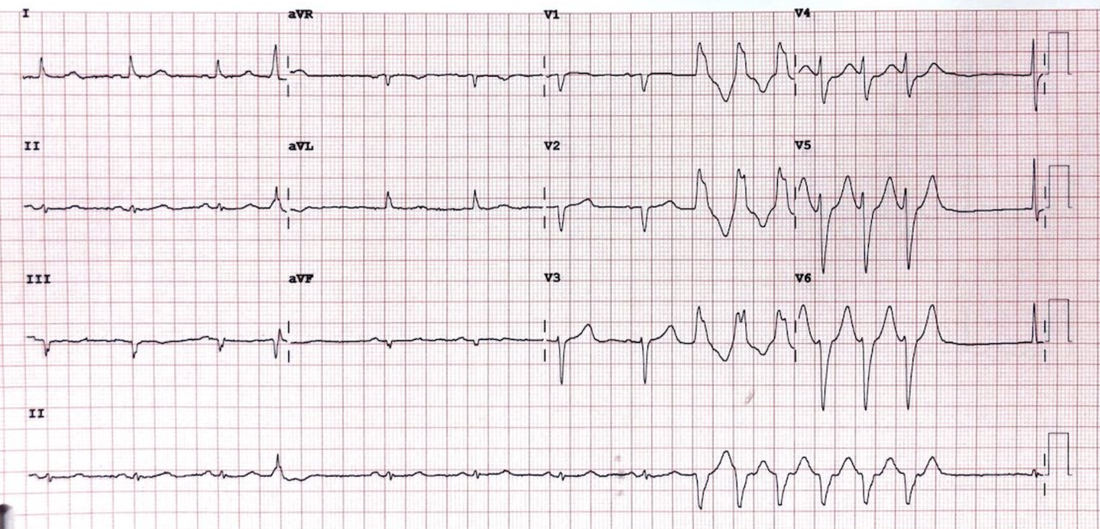Wide complex tachycardias can be a little scary. Bootcamp Members can go to the VT section and review wide complex tachycardias. Also a New section has just been added on monomorphic and polymorphic ventricular tachycardias.
This week we look at two simple cases. The key is is to pick the right treatment. The wrong treatment may simply not work, but worst than that, it may kill your patient.
CASE 1
A 32 yo male is brought into the emergency department from the methadone clinic across the road. It appears that he has been having short bursts of seizure activity. He has no other past history apart from IVDU and he is on the methadone program.
An ECG is performed as shown below. See what you think.
This week we look at two simple cases. The key is is to pick the right treatment. The wrong treatment may simply not work, but worst than that, it may kill your patient.
CASE 1
A 32 yo male is brought into the emergency department from the methadone clinic across the road. It appears that he has been having short bursts of seizure activity. He has no other past history apart from IVDU and he is on the methadone program.
An ECG is performed as shown below. See what you think.
He soon begins to have ‘seizure’ activity. You attach him to a monitor and the following rhythm strip is obtained.
What is the diagnosis?
(a) Monomorphic Ventricular Tachycardia
(b) Polymorphic Ventricular Tachycardia
(c) Torsades de Pointes
(a) Monomorphic Ventricular Tachycardia
(b) Polymorphic Ventricular Tachycardia
(c) Torsades de Pointes
ANSWER
This is Torsades de Pointes
The definition of Torsades de Poines is a polymorphic ventricular tachycardia in a patient with prolonged QT interval. This patient had a very prolonged QT secondary to hi Methadone.
The definition of Torsades de Poines is a polymorphic ventricular tachycardia in a patient with prolonged QT interval. This patient had a very prolonged QT secondary to hi Methadone.
The patient receives one shock and reverts to sinus rhythm. You wish to start medication to prevent the patient from going back into this polymorphic ventricular tachycardia.
Which one of these would you use?
(a) Procainamide
(b) Amiodarone
(c) Magnesium
(d) All of the Above
Which one of these would you use?
(a) Procainamide
(b) Amiodarone
(c) Magnesium
(d) All of the Above
ANSWER
The answer is (c) Magnesium.
DO NOT use Amiodarone or Procainamide as these may prolong the QT interval even further.
DO NOT use Amiodarone or Procainamide as these may prolong the QT interval even further.
CASE 2
An 85 yo male presents with palpitations and pre-syncope. He has a past history of hypertension and had an AMI 5 years ago.
His cardiac examination is normal and he is neurologically intact.
You perform an ECG, shown below:
An 85 yo male presents with palpitations and pre-syncope. He has a past history of hypertension and had an AMI 5 years ago.
His cardiac examination is normal and he is neurologically intact.
You perform an ECG, shown below:
What is the diagnosis?
(a) Monomorphic Ventricular Tachycardia
(b) Polymorphic Ventricular Tachycardia
(c) Torsades de Pointes
(a) Monomorphic Ventricular Tachycardia
(b) Polymorphic Ventricular Tachycardia
(c) Torsades de Pointes
ANSWER
Monomorphic Ventricular tachycardia
This is non-sustained; defined as < 3 complexes or < 30seconds.
This is non-sustained; defined as < 3 complexes or < 30seconds.
You decide to treat the patient to prevent a recurrence. What would you use?
(a) Potassium
(b) Amiodarone
(c) Magnesium
(d) All of the Above
(a) Potassium
(b) Amiodarone
(c) Magnesium
(d) All of the Above
ANSWER
Amiodarone can be used here. Procainamide is an alternative, however in patients with poor left ventricular ejection fraction, it can worsen heart failure.














In non sustained VT you mention less or equal to 3 complexes – but in your example you have > 3 complexes – hence “sustained ”
I guess you are going with less than 30 seconds for duration as duration is 2.2 seconds – just it appears the explanation is bipolar –